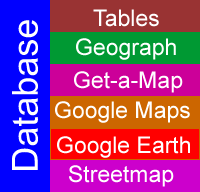UK Prominent Peak Database
There is a fine history of hillwalking lists from Sir Hugh Munro onward. However, there is a need for a new generation of lists that achieve the following:
- Metric based height and prominence criteria to match modern maps
- Demanding and differentiated prominence criteria.
- A consistent set of relevant criteria applied uniformly to all ranges in the UK

The UK Prominent Peak (UKPP) database aims to provide a foundation for a new generation of hillwalking lists. This database has been developed by Jim Bloomer, a keen hillwalker and member of the UK Metric Association. This builds on Ordnance Survey data and the work of others.
Demanding Criteria
The underlying principle of the database is to have demanding criteria for peaks that are listed. Some historic lists are undemanding in either minimum prominence or height.
The UKPP database requires that peaks have a minimum prominence of 100 metres and a minimum height of 500 metres. This avoids relatively insignificant sub-summits and smaller hills that do not merit inclusion.
Nested Lists
A key innovation of Sir Hugh Munro's tables was that he recognised that there was a hierarchy of peaks. There are distinct "separate mountains" (Munros) and subsidiary "tops". However, he never documented how he distinguished between the two.
The UK Prominent Peaks are classified according to the 1-2-5 Principle into four categories. This is in the spirit of Sir Hugh�s hierarchy but with four rather than two levels.
Different historic lists have often been separated by varied height criteria. The UK Prominent Peaks have a height classification too but within one consistent framework.
Foundation for Hillwalking Lists
UKPP�s database of 1564 peaks is too extensive to be a hillwalking list but it is a key foundation for developing a variety of lists.
The Bloomer�s Challenge is a new generation hillwalking challenge. It offers the following benefits:
- UK-wide challenge covers all major ranges
- Demanding prominence criterion means significant peaks are included
- Manageable size with 158 peaks
However, other hillwalking lists can be created from the database to meet individual or local requirements. As an example, the authors have created a "UK Thousander" list.
A Resource for Hillwalkers
This website provides a range of resources for hillwalkers. The database itself is available as a downloadable Excel spreadsheet and documentation is provided on how to use it. A range of online maps is available for database users.
What about the Republic of Ireland?
Today the database only includes data from the UK and Isle of Man. Some historic lists have covered the whole of Ireland and including data from the Republic of Ireland would clearly be valuable. The scale of the mountains there is very similar to the UK and so the same prominence and height criteria would be relevant.